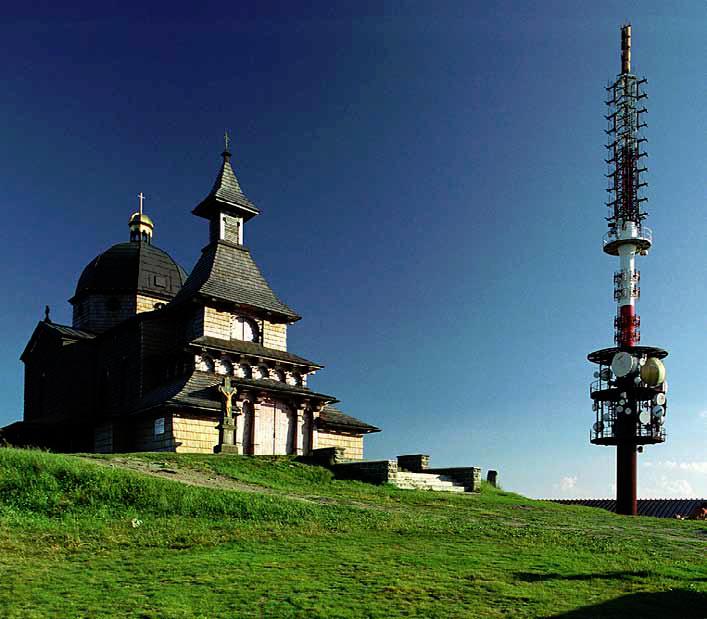
A modern broadcasting and telecommunications company providing a full range of voice, data and internet services across the Czech Republic, as well as TV and radio broadcasting. The company’s aim is to develop and strengthen its market position by continual improvement of services.
Kamil Levinsky has been at the helm of ─îeské Radiokomunikace, the company he joined in 2007, for just over a year. This is an exciting time for the much evolved broadcaster with a strong stake in communications infrastructure, new platforms and constantly changing modes of data interchange – not to mention run-of-the-mill developments like the shift from analogue to digital radio and TV currently being implemented in the Czech Republic.
─îeské Radiokomunikace traces its origins back to 1963 when it was the Czechoslovak government department for radio communications. Privatised after the restoration of democracy in 1989, it went through restructuring to become a full service provider of electronic communications and broadcasting services. In 2010 it was acquired by MIRA, a fund management company within the Macquarie Group, now the sole shareholder.
One of the largest telecoms organisations in the modern Czech Republic, it has three principal business streams. It provides a broadcasting platform over the airwaves for government and licensed broadcasters; it offers comprehensive voice data and internet services; and since it owns hundreds of structures and buildings throughout the country, including Václav Aulický’s unique telecommunications tower in Prague from which, as from its other assets, itleases space to other telecommunicationsoperators.
Twelve digital television and eight radio stations broadcast from the ┼¢i┼¥kov Television Tower as well as another six analogue VHF radio channels. And ─îeské Radiokomunikace is the operator of three out of four digital TV multiplexes in the Czech Republic—it owns two commercial DVB multiplexes including that of Czech Digital Group acquired in 2010, and operates the multiplex owned by the national broadcaster ─îeské televize. With the switch over from analogue to digital complete, the company is now focusing its efforts on the rollout of DVB-T2, the second generation digital system that is more effective as a carrier of HD (high definition) TV content with the ability to provide pay TV over terrestrial platform. Around 60 percent of Czech households are now receiving digital TV, which launched in 2008, and that number is rising steeply. Cable and satellite remain fairly flat at around 20 percent.
In July 2012 the Czech Telecommunication Office gave the go-ahead to ─îeské Radiokomunikace to start experimental DVB-T2 broadcasting from Prague and Plze┼ê – in time to show HD coverage of the London Olympics. “We negotiated inclusion into an experimental DVB-T2 multiplex with ─îeská televize, Prima and Barrandov for HD. Since so many Czech households now have widescreen HD sets, migration to higher standard TV broadcasting is a logical and natural step. We are committed to showing the viewers that terrestrial broadcasting can provide them for free with the same high quality content as via cable TV or satellite.”
Radio is still broadcast as an analogue service in the republic, and though radio is a highly diversified field, ─îeské Radiokomunikace broadcasts 98 percent of the stations transmitted domestically, including Radio Prague and the regional stations operated by the national carrier ─îeský Rozhlas. In addition it supports the four competing mobile phone companies Telefónica O2, T-Mobile, Vodafone and U:fon, offering them space on its 600 towers. “Using our infrastructure in rural areas is a lot more cost effective for mobile operators than building and owning their own towers,” he points out.
Control of the infrastructure is an important strategy.“We live or die by our reliability in the market, particularly in corporate data services,” says Levinsky. “We own the city networks and also 2,600 kilometres of fibre and microwave infrastructure.” He goes on to say that this is a 100 percent redundant system. Redundant in the engineering sense that there is always at least one alternative route for any data communication – the client will never detect a failure; a very significant asset for corporate clients for whom security of communication is business critical.
However, for these clients the security of their data is just as critical. In 2010 ─îeské Radiokomunikace came to realize that the telephony market was on the decline – at least as far as the fixed network was concerned – and that having established itself as firmly in control of the physical infrastructure it needed to start looking at the future of business communications. It concluded that the path led clearly in the direction of smart cloud services – so it launched Smart Cloud a year ago. Smart Cloud offers business clients the opportunity to store, manage and distribute all their data using ─îeské Radiokomunikace’s infrastructure, which has been extended to a data centre based in the Prague Tower.
At first, take-up was slow Levinsky admits. “Though the savings to our clients are truly significant – they typically work out at around 60 percent of their IT spend – businesses are reluctant to lose control, as they see it, of their critical data: but they don’t lose control of it! When we launched the Smart Cloud services we were the only company in the Czech Republic that could link its ring-fenced virtualized server to its own telecommunications network. It is a completely secure environment for running business applications.” This message is beginning to get though as companies realise that they can get reliable IaaS (infrastructure as a service), PaaS (platform as a service) and flexible data management over powerful servers with data backup and long term archiving.
Clients still need a lot of reassurance before they will entrust their data to a third party, but this offers them state of the art outsourcing firmly located in their own backyard – understandably they don’t like the idea of their data being warehoused in Ireland or India. ─îeské Radiokomunikace needed to populate its data centre with servers that delivered virtualization and cost-efficiencies but were entirely secure, soit deployed the Cisco Unified Computing System, consisting of 30 servers powered by Intel 5600 Xeon processors that provide all the control they could wish for – as Levinsky explains: “Some people are scared off by the name. It’s only a cloud based system in the sense that it is virtual – the data remains inside a private network.” An added advantage for business clients, he adds, is that the service is completely scalable, and if their business is seasonal their fees will contract or expand with their demands.
The business has changed radically since Levinsky joined it five years ago. It is financially much more stable, relying less on short term contracts and more on sustained partnerships. “We got out of activities where we didn’t think we could add value, like retail telecommunications and now we are concentrating on business to business solutions.” Moving into the ICT space and staying ahead in that space is his number one priority as the bread and butter channels become commoditised. Some large government outsourcing contracts are coming up for tender: if ─îeské Radiokomunikace can land these contracts and significantly increase its stake in public sector data and voice services Czech taxpayers will gain the benefit already seen by corporate clients.
Written by John O’Hanlon, research by David Brogan
DOWNLOAD
 Ceske-EMEA-Nov12-bro-s.pdf
Ceske-EMEA-Nov12-bro-s.pdf













